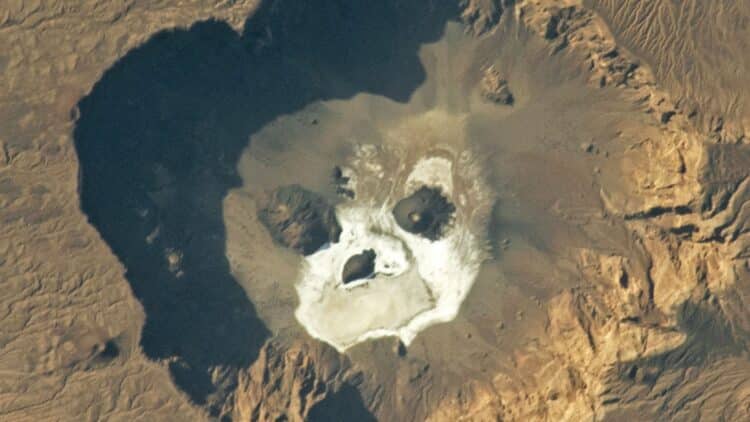From the series: more historic discoveries on our planet… NASA has just discovered in the heart of the hottest and most inhospitable desert on the planet, a strange white, glowing skull. And, contrary to what we might think, it is not a fossil or a literal skull, but rather a surreal landscape: the Trou au Natron. Also known as the Emi Koussi caldera, in Chad, which, seen from space, looked very much like a skull – but how would it be possible to find this skull then?
What is this glowing skull in this desert?
Okay, but what exactly is Trou au Natron? Well, this is a place in Chad that was once an active glacial lake full of life, but now it seems dead. In fact, researchers believe that Trou au Natron was a thriving lake until about 14,000 years ago, until the moisture in the region began to disappear. And what remains today is a dry, salty lakebed that glistens in the sun in the middle of the Sahara.
The most surprising thing of all is that, at first glance, the white, glowing summit of the Emi Koussi volcano appears to be covered in snow, which would clearly be something unlikely for a place in the Sahara desert. However, in the images captured by the astronauts, the white spot forms what appears to be the outline of a giant skull, with its shadows cast by the edges of the caldera creating the eye sockets. That’s why we think we’ve found a white, glowing skull.
However, this visual effect, impressive as it may be, is nothing more than the result of a combination of natural factors: the dry bed of an ancient salt lake and the deep topography of the volcanic caldera. The whiteness we see is caused by salt deposits accumulated after millennia of evaporation. And the dark eyes are the craters and depressions formed by past eruptions, which are now inactive.
How could there be water in the desert?
Well, NASA didn’t find any fossils or bones. But even so, the natural formation ended up being nicknamed a skull because of its striking appearance. It’s also worth mentioning that Emi Koussi is the highest peak in the Sahara Desert. It is 3,415 meters high. Its caldera, called Trou au Natron, reaches almost 745 meters deep and measures dozens of kilometers in diameter. It is worth mentioning that during the Ice Age, this place was filled with fresh water and ice, forming a glacial lake that supported life forms and influenced the local climate.
That’s where this discovery comes in, because traces of this humid past are still visible in the desert landscapes:
- Erosion channels are carved by water.
- Depressions are formed by runoff.
- Saline sediments tell a story of slow and constant transformation.
Why is the discovery of this white glowing skull important to us?
Well, this discovery changes the way we see the Sahara Desert. After all, we imagined that this place was always dry and desolate, but what we see now is a geological palimpsest, which, going beyond technical terms, consists of all the layers of time, climate, and volcanic activity accumulated in natural formations – and which gave rise to the formation of our skull.
It is worth mentioning that the fact that Trou au Natron was a lake, back then, 14,000 years ago, is also fundamental. This means that the Sahara was once a place with much more humidity, vegetation, and perhaps even human occupation. In other words, it shows us that desertification is not eternal, but rather a phase. It is no wonder that experts are already thinking about creating a huge artificial lake in the desert.


